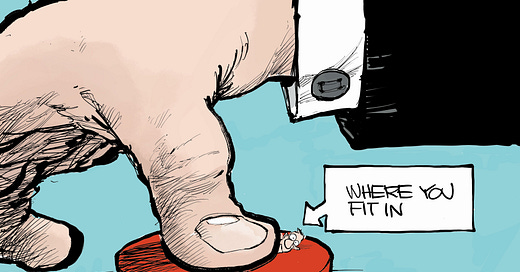Australia’s Digital Dissonance: Why the Productivity Conversation Needs a Reset
Our digital economy is being colonised—not with malice, but by neglect.
This past couple of weeks we’ve seen the Australian Prime Minister Anthony Albanese and Treasurer Jim Chalmers take to the National Press Club podium, declaring that their freshly re-elected Labor government will make economic and productivity reform the centrepiece of its second-term agenda.
To kick things off, they announced they will convene a three-day Productivity Roundtable (Aug 19-21) for up to 25 leaders from government, business, trade unions and civil society.
The goal is to have a new conversation to reboot Australia's stalled economic engine and chart a viable course through an age of "permanent churn and change.”
“When you look around the globe at all this extreme volatility it would be misguided to assume it’s temporary, when it reflects deeper currents,” said Federal Treasurer, Chalmers.
“A lot of this volatility we’re seeing masks more fundamental changes in the way the world conducts its business. The rules and ideas that made up what we thought of as the global order are being re‑written.”
Chalmers is right and there is little doubt among business leaders that a serious reform agenda for the nation is essential for the nation’s growth, productivity and security.
For two decades, Australia’s productivity – a key measure of living standards and prosperity - has been stuck. Before the pandemic, our gains were crawling at half the pace of the decades prior. By the 2022 election, we hit a wall: the sharpest quarterly drop in productivity in nearly 50 years.
Treasury’s diagnosis?
I’m paraphrasing but it comes down to this: an economy that’s too timid and risk averse to innovate; too undercapitalised to scale; too mismatched in skills to compete; and too reliant on taxpayer-funded jobs and an unimaginative service sector where traditional productivity metrics go to die.
So economic reform discussions are indeed long overdue and welcome in Australia.
But the bigger question is …do our leaders and decision-makers have a deep and pragmatic understanding of what is really driving unprecedented 21st century global change?
The short answer is software, data and AI systems. But, if that is well understood among the nation’s decision-makers, it is barely communicated to Australians beyond the catch-all - technologically driven change.
In 2011, as Australia’s productivity, a measure of a country’s living standards, hit a wall, American venture capitalist Marc Andreessen wrote “Software is eating the World”.
Today, AI and smart algorithmic agents and systems are eating software. It is the most profound and disruptive driver of change across global economies, culture and geopolitics.
What we are living through and trying to compete in, is not just another economic cycle or another wave of automation. It is a systemic shift in how power, productivity, and sovereignty are defined.
The digital stack—code, infrastructure, platforms, and the narratives that travel across them—has become the new strategic terrain.
Yet Australia's political and economic discourse still treats AI and digital infrastructure as "enablers" rather than as the core infrastructure of future national power.
“What most decision-makers failed to anticipate is that software wouldn’t just disrupt markets. It would rewrite doctrines of power,” writes Eduardo Giglio, an EU Policy Centre Cyber & Digital Policy Lead analyst.
The drivers of Australia’s 19th and 20th century cultural and economic challenges and prosperity were shaped by what historian Geoffrey Blainey called The Tyranny of Distance. Now, as Australian political and business leaders struggle to define our place in a world driven by AI systems, our undoing could well be the tyranny of Digital Dissonance.
How can Australia can close its digital dissonance gap and make the illusion of progress real? Pls subscribe to find out.
Keep reading with a 7-day free trial
Subscribe to Realpolitech to keep reading this post and get 7 days of free access to the full post archives.




